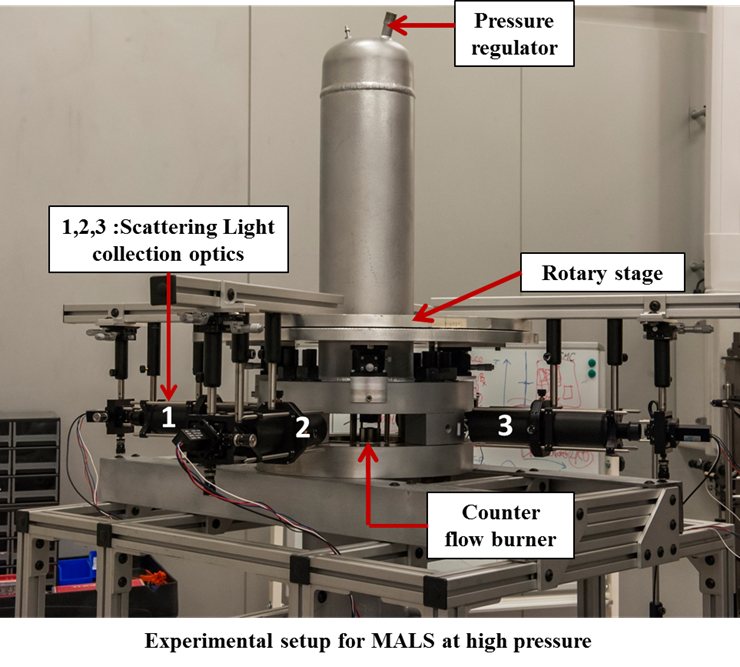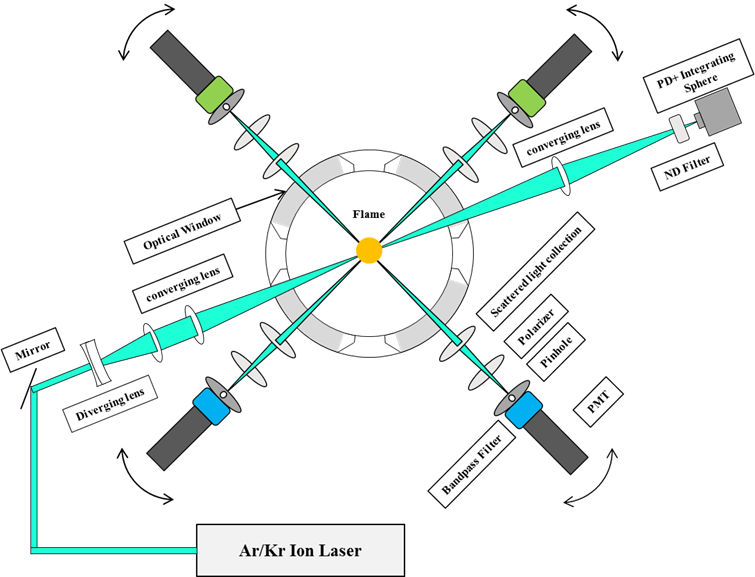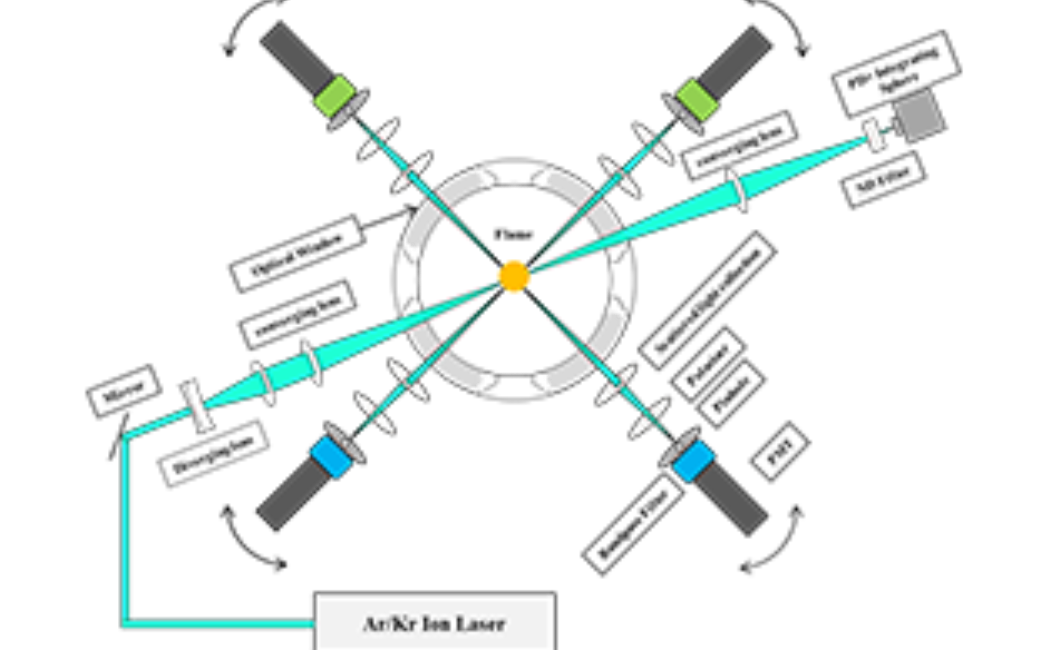Details
Motivation
Experimental Facility
- Ar/Kr Ion Laser with 488, 514.5 and 674.1 nm wavelength
- Pressure Vessel provide optical access to collect scattered light from zero to 180 degree
- Four PMT’s to collect scattering signal simultaneously
- Counterflow burner inside the vessel can move in xyz directions

- Multi-angle multi-wavelength scattering (MAMWS) and extinction in CFDF upto 40 bar
- Rayleigh Debye Gans-Polydisperse Fractal Aggregate (RDG-PFA) theory to derive information about soot morphology.

Morphology Parameters
Diameter of primary particle (dp), Radius of gyration (Rg), Number of particles in an aggregate (N), Soot volume fraction (fv), Fractal dimension (Df), Number density (np), Aggregate size distribution (geometric mean (Ng), geometric standard deviation (σg)), refractive index (m)
Aim
- High Pressure system for soot morphology
- Data acquired about soot morphology
- Upto 40 bars
- For various gaseous fuels
- At different strain rates
- Pressure dependence of fv, dp, Df, Rg, N, np, Ng, σg
- Pressure dependence of refractive index of soot




